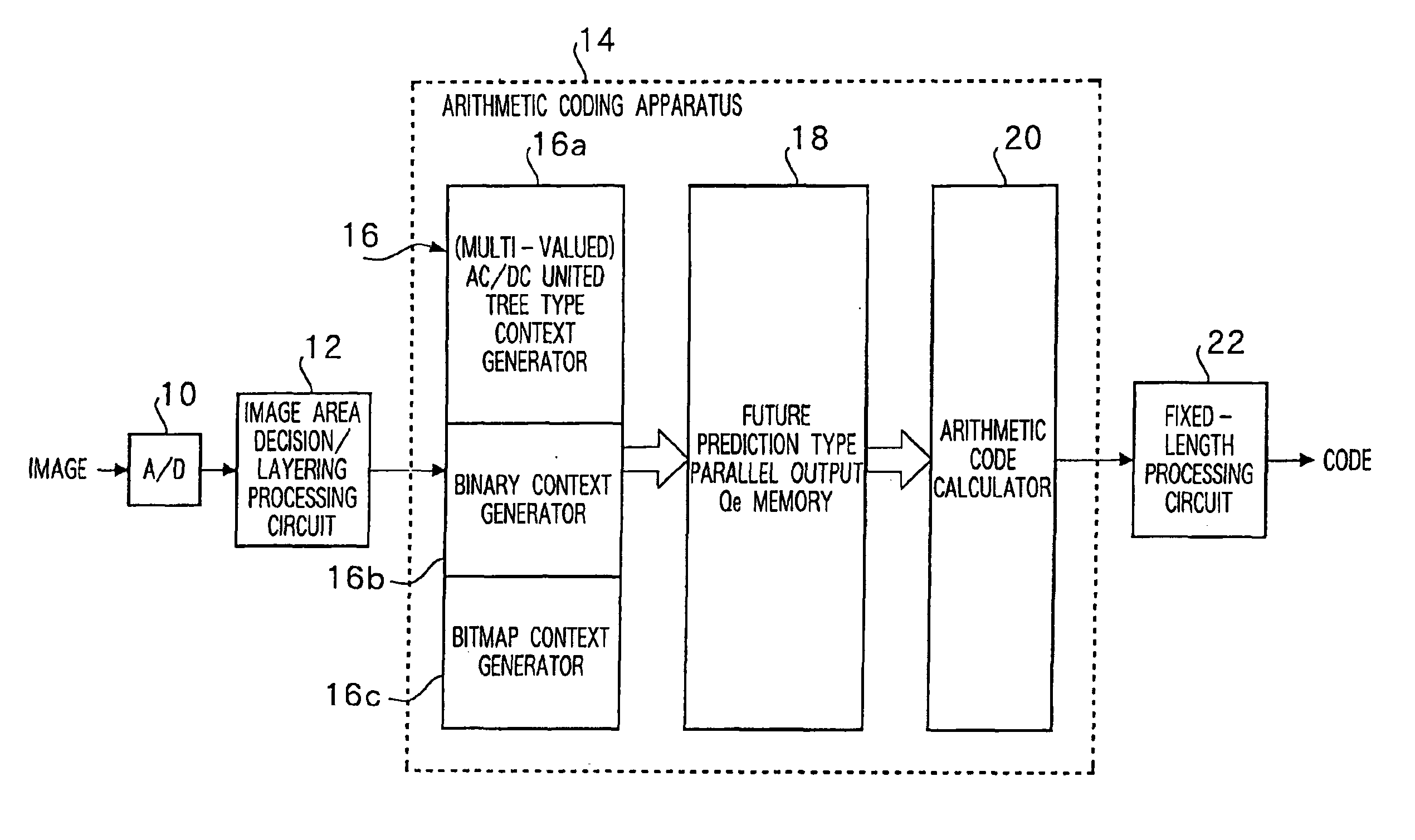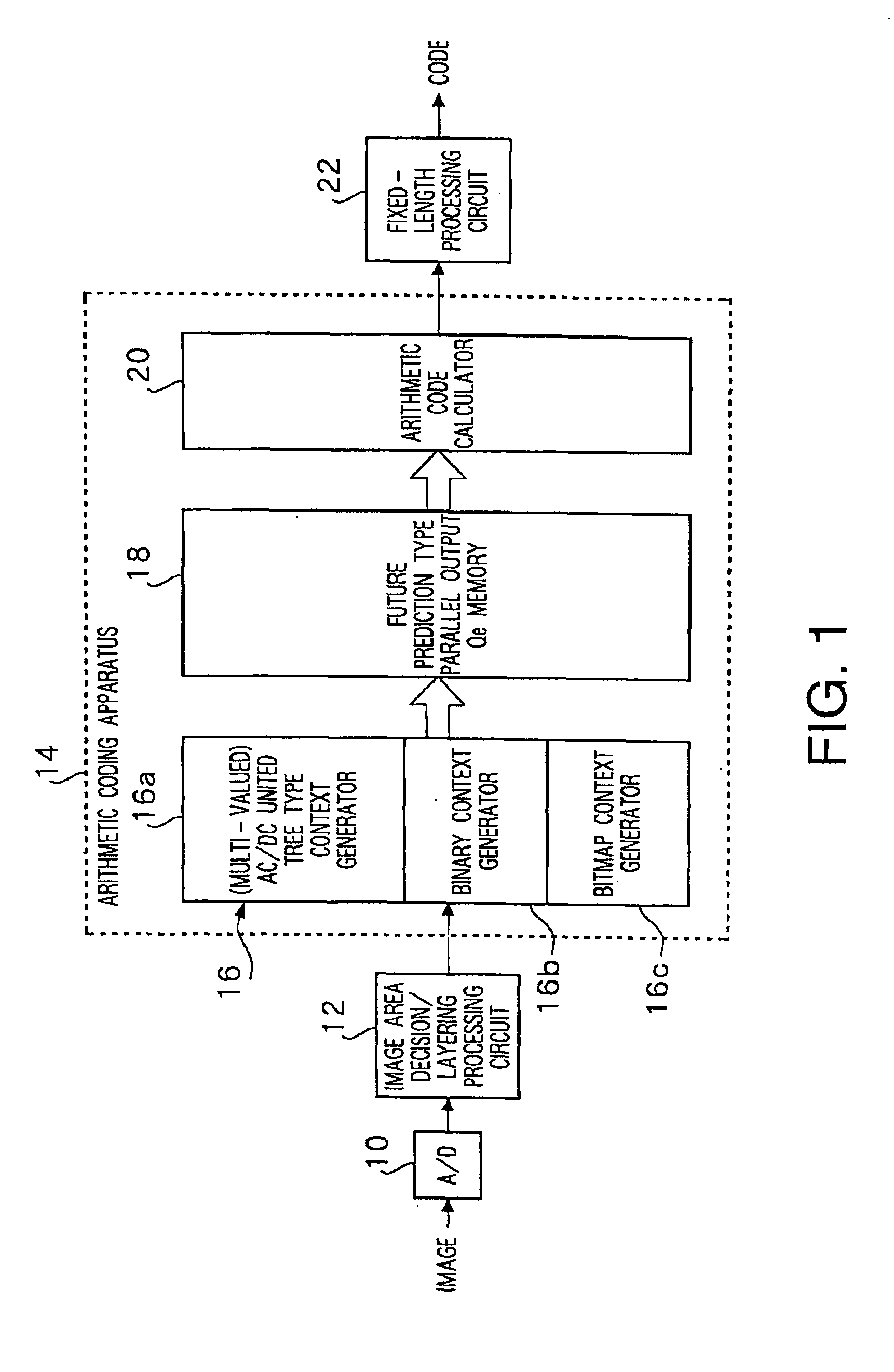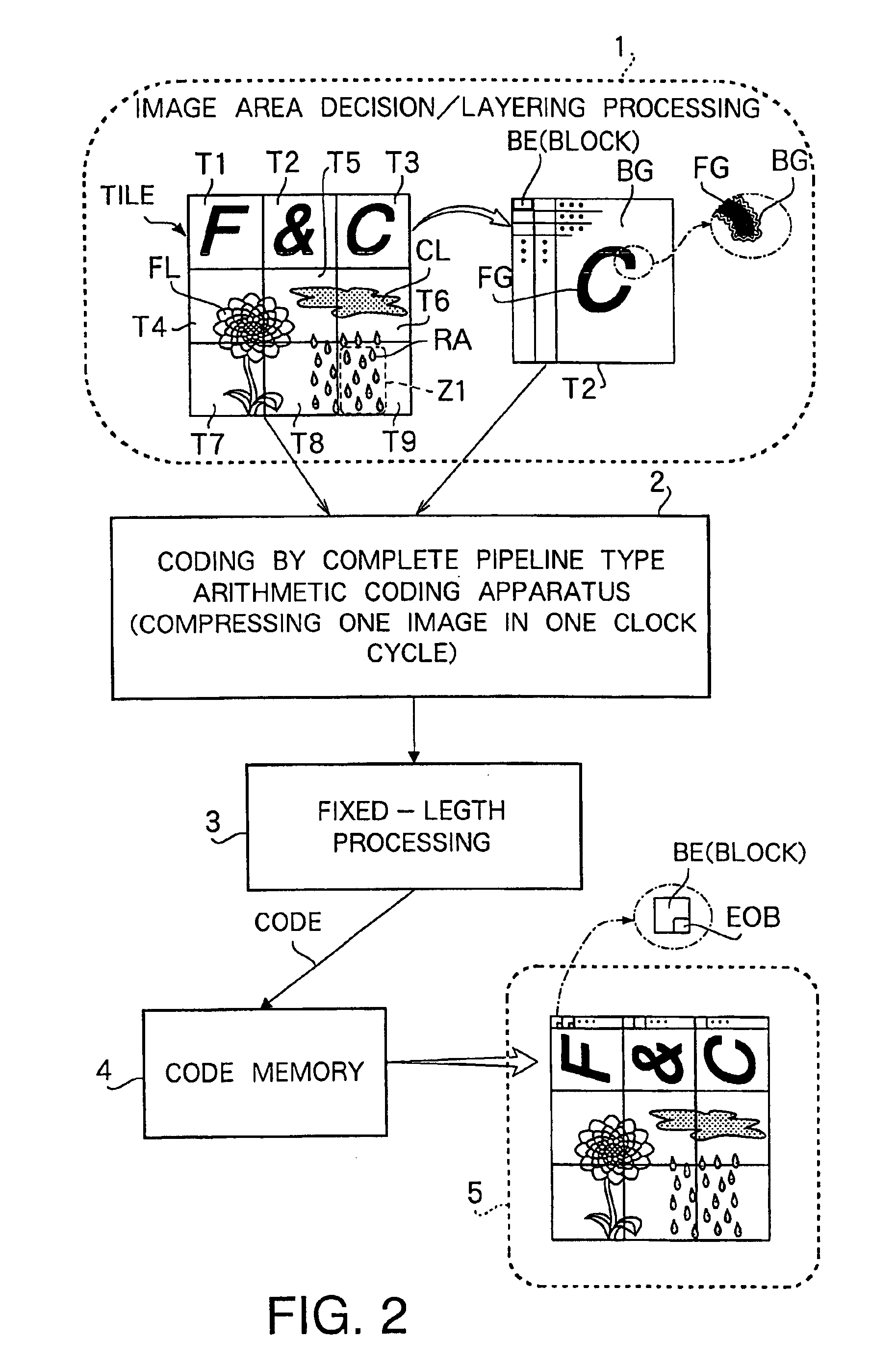Arithmetic decoding method and an arithmetic decoding apparatus
- Summary
- Abstract
- Description
- Claims
- Application Information
AI Technical Summary
Benefits of technology
Problems solved by technology
Method used
Image
Examples
Embodiment Construction
FIG. 1 outlines an overall configuration of an example of an arithmetic coding apparatus of the present invention.
As shown in FIG. 1, the arithmetic coding apparatus of the present invention converts an image signal to digital data through A / D converter 10, and then applies image area decision and layering processing using image area decision / layering processing section 12.
Image area decision is performed in tile (macro block: e.g., 32 pixels×32 pixels) units.
Layering processing is processing of grouping all pixels included in one tile into, for example, a foreground (FG) and background (BG). Such processing allows information of an input image to be acquired accurately.
The acquired image information is subjected to arithmetic coding by completely pipelined arithmetic coding apparatus 14.
When a predicted value is different from the actual value, the arithmetic coder outputs a code as a penalty and rewrites a context RAM. Therefore, when the context RAM is rewritten, the pipeline is ...
PUM
 Login to View More
Login to View More Abstract
Description
Claims
Application Information
 Login to View More
Login to View More - R&D
- Intellectual Property
- Life Sciences
- Materials
- Tech Scout
- Unparalleled Data Quality
- Higher Quality Content
- 60% Fewer Hallucinations
Browse by: Latest US Patents, China's latest patents, Technical Efficacy Thesaurus, Application Domain, Technology Topic, Popular Technical Reports.
© 2025 PatSnap. All rights reserved.Legal|Privacy policy|Modern Slavery Act Transparency Statement|Sitemap|About US| Contact US: help@patsnap.com



